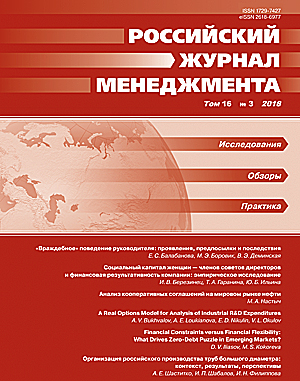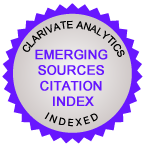Analysis of Management Collusive Decisions on the World Oil Market
DOI:
https://doi.org/10.21638/spbu18.2018.303Abstract
The article examines the issue of the advantage and key conditions of collusion between the major oil exporting countries on the world oil market. This issue is explored in the paper within the framework of the concepts of stochastic cooperative game theory and the theory of industrial organisation. Namely, the concepts of game theory correspond to the conflicting interests of collusion participants. Next, the possibility of collusion between market players is considered and resolved using the theory of cooperative games. Stochastic methods of constructing and investigating the characteristic function of a cooperative game help to take into account the high volatility of the oil market. Further, the Cournot model of the theory of industrial organisation describes the strategic management of production volumes to maximize profits. The Stackelberg model takes into account the incentives to collude through the emergence of an industry leader, who first announces his management strategies. Based on these methodologies, the paper concludes that the collusion for its participants is beneficial, and the equilibrium levels of quotas for oil extraction are found.
Keywords:
world oil market, OPEC, collusion, stochastic cooperative game, Cα-core, VaR
Downloads
References
Downloads
Published
How to Cite
Issue
Section
License
Articles of the Russian Management Journal are open access distributed under the terms of the License Agreement with Saint Petersburg State University, which permits to the authors unrestricted distribution and self-archiving free of charge.





